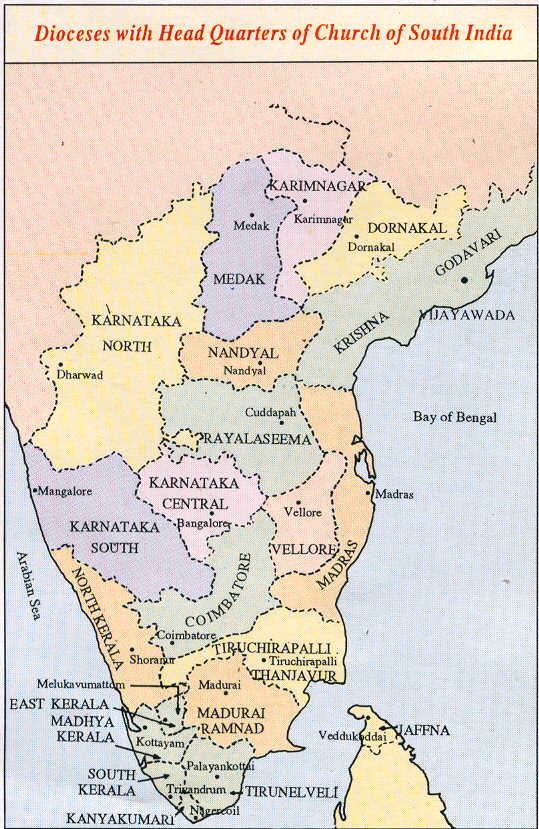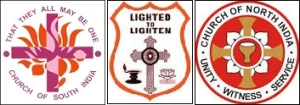1905: Manon Ipe Mathai awarded ‘ROYAL HUMANE SOCIETY BRONZE MEDAL’ for bravery

Manon Ipe Mathai was awarded the ‘ROYAL HUMANE SOCIETY BRONZE MEDAL’ in 1905 for putting his own life at great risk to save someone else’s. He may be the first Travancore citizen to receive such an award during the British Rule in India.

The Royal Humane Society Medal was established in 1774. The Medal was initially awarded to personnel in recognition of lifesaving acts or attempts to save a life from drowning. The award of the Medal was later expanded to reward all acts of exceptional bravery in rescuing or attempting to rescue persons from mines, wells, blasting furnaces, or in sewers. The medal features a Latin inscription on the reverse which translates to “He Has Obtained this Reward for Saving the Life of a Citizen.”
On 5th May 1905, while bathing in the Pamba (Pampa) River, Nedumbrayar, Pathanamthitta, India a young man sank in 24 feet of water. Mathai, at great risk, dived in. He found him in the second attempt and rescued him. It was for this courageous rescue that he was duly recognised and awarded the medal with a certificate.



Manon Ipe Mathai or Appupi (as he was fondly called) was well known for his physical strength and spiritual vigour. God enabled him to use his strong physique to rescue many lives in the community. He saved many people from drowning in the Pamba River during the flood of 1924 (Malayalam Year 1099). Thousands of people had lost their lives during this unexpected natural disaster. He saved people from wild animals, mad dogs and even poisonous snakes. In one incident, a young man had climbed up an Angili tree and could not get down. Appupi was confident he could catch him in his sturdy arms and asked him to jump off the tree. The young man was safely caught in Appupi’s strong hands.
He was committed to his community. In his free time, he would voluntarily undertake repair and maintenance work of local roads in Maramon, especially during the rainy seasons. Villagers fondly called him as Manon Thantha (Manon Appachen) or Appupi (Grandfather).
Back in 1952, during the agricultural and khadi exhibition held in Chirayirambu, Maramon, Appupi was asked to participate. He famously hung a live full-length python around his neck, holding its head in one hand and its tail in the other. His fearless act is still a vivid memory to those who attended the exhibition.
Appupi and Palakunnathu Kadon Thommachen were highly respected social leaders of the Maramon area and people would go to them to settle their disputes (civil and criminal) instead of secular courts. They also actively took part in the pandal construction work of the Maramon Convention for many years. Appupi was also a close friend of the famous Ayurveda Vaidyan, Kolathu Yohannan Vaidyan.
Appupi (Manon Ipe Mathai), was the eldest son of Mathen Ipe (Ayyakavil – Kallirikunnel family from Kanjeettukara, Ayroor) and Mariamma (daughter of Kurian, Palakunnathu Manon family, Nedumbrayar, Maramon). Ipe Mathai’s parents stayed in Manon Malayil house, Thiruvachamannu, Maramon. They were the members of the Maramon Mar Thoma Parish.
Ipe Mathai married Mariamma (daughter of Kochitty. Plathodathil House, Kuriannoor). They had two daughters – their first daughter Mariamma (jr) was married to Avarachen, Vavolil House, Ranny and their second daughter Aleyamma was married to Mathai of Kunnil Family from Maramon.
Author’s note: Appupi is Grace John’s (Graceamma) (Author, Nalloor Library) grandfather’s (Mr. Thomas Manon) elder brother. Mrs. Grace John is from Hoskote, Karnataka (d/o Mr. & Mrs. M. T. Joseph, Co-founders of the Hoskote Mar Thoma Mission Medical Center – Estd: 1947).
She fondly remembers visiting Valiappachen along with her siblings during their summer vacations. He was a delightful story-teller and the children would vie for a place on his lap to hear all about his adventures. He could accommodate all four siblings on his lap! He always stocked up goodies for the children – mangoes, tender coconut in jaggery, fried banana chips, etc. Visiting Valiappachen was the highlight of their holidays. May his memory be a blessing.
Explaining the Maramon Convention 2024 to Children (Free pdf) Useful for Sunday School students and teachers!

A free pdf resource sheet for Parents / Sunday School Teachers to explain to their children facts and events chosen from the history of the Maramon Convention. In 2024, the Maramon Convention will be conducted for the 129th time from 11th -18th February 2024, at Maramon, Pathanamthitta District, Kerala.

1985 Maramon Convention: Astronaut turned Evangelist James Irwin wows with display of rare Moon Rock


“Weight – 4.5 ounces (129 g)” Photo by Leo Boudreau
In a historic and mesmerizing moment at the 1985 Maramon Convention, the congregation witnessed a unique blend of science and spirituality as former astronaut and evangelist James Irwin took the main stage. Worshippers were left in awe as Irwin, who had walked on the moon during the Apollo missions, showcased a rare Moon rock, adding an extraordinary dimension to the spiritual gathering.
The anticipation heightened as Irwin donned custom gloves and carefully opened a special bag that cradled the precious lunar rock artefact. The air in the convention pandal was thick with excitement as he unveiled the rock retrieved during Irwin’s historic moon journey, became the centre of attention. Holding it high for all to see – the rock, once part of the distant lunar landscape, now found itself in the hands of a man whose journey had transcended the boundaries of our world.
The 1985 Maramon Convention would be remembered as the moment when the celestial and the divine converged in a sermon delivered on the banks of the River Pamba.
Mr. Irwin said that his experience exploring the moon on the Apollo 15 mission in July 1971 moved him to devote the rest of his life to “spreading the good news of Jesus Christ”. He resigned from the astronaut corps a year later and became the founding president of High Flight Foundation, an interdenominational evangelical organization based in Colorado Springs.
To church groups around the country, Mr. Irwin often spoke of the lunar mission as an epiphany, declaring, “I felt the power of God as I’d never felt it before.” Quoting Scripture on Moon
While on the moon, at the end of the first day exploring the rugged lunar highlands, Mr. Irwin said he was reminded of “my favorite Biblical passage from Psalms.” Speaking by radio to Mission Control in Houston, he began quoting the passage, “I’ll look unto the hills from whence cometh my help,” and added quickly, “but, of course, we get quite a bit from Houston, too. “https://www.nytimes.com/1991/08/10/us/james-b-irwin-61-ex-astronaut-founded-religious-organization.html
About Astronaut James Irwin
Astronaut James Irwin was an American astronaut, test pilot, engineer, and geologist who gained fame as the eighth person to walk on the Moon during the Apollo 15 mission. Born on March 17, 1930, in Pittsburgh, Pennsylvania, Irwin had a background in aeronautical engineering and earned a Master’s degree in the same field from the University of Michigan.
Irwin was selected as an astronaut by NASA in 1966 and made his first spaceflight as the lunar module pilot for Apollo 15 in 1971. During this mission, he and Commander David Scott spent three days on the lunar surface, conducting scientific experiments and exploring the Hadley-Apennine region. Irwin’s activities on the Moon included using the lunar rover, a vehicle designed for lunar exploration, making them the first people to drive on the moon. They collected 175 pounds of rocks and soil from the moon’s surface.

After his space career, James Irwin left NASA in 1972 and pursued various interests, including writing and public speaking. He founded the High Flight Foundation, a Christian organization, and later became involved in several ventures.
Tragically, James Irwin passed away on August 8, 1991, at the age of 61, due to a heart attack. Despite his relatively short time in the spotlight, his contributions to lunar exploration and the advancement of scientific knowledge left a lasting impact on space exploration and the understanding of the Moon’s geology.

Mar Thoma Church Day (Sabha Dinam), മാര്ത്തോമ്മാ സഭാ ദിനം
Pages from History:- Mar Thoma Church Day (Sabha Dinam), മാര്ത്തോമ്മാ സഭാ ദിനം
21 December: St. Thomas Day – Sabha Dinam. We believe that St. Thomas one of the disciples of Jesus Christ is the founder of the Christian Churches in Kerala. According to tradition he reached the Malabar Coast at Crangannur {now Kodungallur} in 52 A.D. Kerala Christians observe St. Thomas Day on 21 December every year. Special thanks giving and remembrance services are held on this day in most of the churches. In the Mar Thoma Church we observe it as Sabha Dinam.

Remembering Dr. Ida Sophia Scudder – Founder of CMC Vellore
Dr. Ida Sophia Scudder

‘Aunt Ida’, as Dr. Ida Scudder was fondly called, was born in Ranipet, Tamil Nadu on 9th December, 1870 and passed away on 24th May, 1960, in Kodaikanal. To this day, she is remembered with great affection by the staff, students and alumni of CMC Vellore and the citizens of Vellore.
Her passionate concern for the women of India sprang from the night she was begged by a Brahmin gentleman to come to save his young wife who was struggling in childbirth. Then only a teenager with no medical training, she could offer no help – but the man refused to allow her doctor father to come near his wife: “it would be better that she died than be seen by a man”. On that same night, two other men came to her parents’ bungalow with the exact same request, and departed with the same sad response. The next morning she was shocked to learn that all three mothers and their babies had died – all for want of a female doctor. She gave up all thoughts of marriage and a comfortable life in the USA, and instead threw herself into medical training, returning to India as a qualified doctor in the year 1900.

Her primary focus in those early years was women and children. She started with a tiny clinic: just one bed with a window through which medicines were dispensed. In the year 1902 she opened the 40-bedded Mary Taber Schell Memorial Hospital in Vellore. In the next year, with a small band of dedicated helpers, she saw over six thousand patients and conducted 40 surgical operations. She did not neglect the rural population, but would take out bullock carts, carrying nurses and medicines, and hold ‘roadside clinics’ at the nearby villages.
The funds to build the first small hospital were donated by a New York banker, Mr. Schell, in memory of his late wife Mary. He actually gave Ida Scudder more money than she asked for because he wanted it, he said, to be a “very good hospital”. This concept of not settling for “good enough” but striving for excellence was one of the hallmarks of Aunt Ida’s life, and of the institution she founded. CMC has always tried to be the very best it can be, sending its staff for higher studies at leading institutions around the world, and investing in the latest medical technology.

Right from the beginning, Ida knew that she needed to train women to help women. Initially it was compounders and nurses: formal nurse training began in 1909. By the year 1918, she proudly opened the Missionary Medical School for Women, which offered the LMP (Licensed Medical Practitioner) course.

In 1928, ground was broken for the “Hillsite” medical school campus on 200 acres at Bagayam, Vellore. In 1928, Mahatma Gandhi visited the medical school.
In 1942 this was upgraded to a full MBBS degree course, and men were admitted from 1947 onwards. The Nursing School became the first College of Nursing in India in 1946 and is now a WHO collaborating centre for Nursing and Midwifery. In 2020, CMC Vellore celebrated Aunt Ida’s 150th birth anniversary and 120 years of CMC Vellore.
Ida Scudder is famous as the founder of the Christian Medical College and its associated hospitals, but her legacy is far greater than the institution and its buildings.

She brought new hope and dignity to women in South India, giving them the benefits of modern medicine previously denied them by cultural barriers. She opened up the health care professions to women from all faiths and backgrounds, encouraging families to allow their daughters to train as nurses and doctors and showing by her own example and her students’ achievements that women could equal men both in medical studies and clinical proficiency, and excel in leadership even in the toughest of times.
Ida Scudder inspired hundreds of young medical professionals to take the words of Jesus as their motto. He said that he had come, “not to be served but to serve.” Many of her graduates dedicated their lives to bringing healthcare and new hope to remote areas of India. Others continued to serve in Vellore, passing on the torch of knowledge, skill and compassionate caring to new generations.

At the same time, Ida never lost “the common touch”. Patients loved her because of her compassionate care for them and the way, even after retirement, she used to sit beside them in their pain and hold their hands. Her students loved her because she made them her family, spending her off-duty time with them for relaxation and fun, and not just studies. Her colleagues and staff members respected her trust in them and her integrity, tireless hard work and indefatigable spirit as she strove to build “not a medical college, but the Kingdom of God”.

Ida Scudder, who never had any postgraduate medical training, was a pioneer in many areas: medical training for women, roadside clinics, new initiatives in education and research. Yet, she was so determined to start helping in India that she had arrived in Vellore, in 1900, without any working experience: her plan was to serve her internship under the supervision of her father. However, he died within a year of her return to India.
When it came to the first years of academic teaching, she had to go back to her basic text books and constantly study to keep ahead of her students. Nevertheless, she recognised the value of research and both published papers herself and encouraged others to do so. She tried to make sure that CMC was at the forefront of introducing new treatments and acquiring the latest equipment. Her commitment to improving the quality and effectiveness of medical practice has resulted in CMC Vellore being one of the leading medical research institutes in India.
For her tremendous and tireless service to the nation, Ida Scudder received the Kaiser-i-Hind medal in 1920. But she was not someone who merely achieved great things herself; she also inspired others to achieve more than they could imagine. She had to cajole and persuade people to train in new specialities and take up unfamiliar administrative responsibilities – and people responded willingly because of her leadership and passion. Somehow, during the closing years and aftermath of the Second World War and with no financial security, she managed to pull together a top class faculty to staff the new Medical College.
As we now gradually recover a respect for nature, and an awareness of its value and fragility, we should remember that Ida Scudder, one hundred years ago, was a committed environmentalist. She ensured that there was always space for flowers and trees in her hospital. She loved creation and retired to the blossoms and natural beauty of Kodaikanal.
Ida Scudder continued to provide inspiration and moral support for those who assumed leadership of the College and hospital after her retirement in 1945. She encouraged the emergence of a cadre of Indian professionals who were committed to the highest standards of medical practice and education. Her funeral in 1960 in Vellore was an all-community event with thousands of people of many faiths lining the streets. The Government of India issued a commemorative stamp on 12th August 2000 in her honour.


Ida Scudder’s example of dedicated service to God and to mankind, her tireless work, pioneering spirit and deep practical faith has continued to motivate the Christian Medical College Vellore, its staff and students, to the present day. Her values and ideals remain at the centre of the institution and are the reason why it continues to grow, continues to have room for both rich and poor and continues to hold international respect for its work in education, healthcare and research.
Always she carried great burdens: responsibilities to her patients and staff, shortage of resources and difficult leadership decisions. However, this never showed, for she relied ultimately on her God, who, in the words of her favourite hymn, was her Vision, Shield and Delight.
Ida, a charismatic and indomitable leader who was completely committed to her cause, was ably supported by many wonderful women who strengthened her hands and worked beside her, to make all her dreams for India and Indian women come true.



Additional Reading
Calling, Conflict and Consecration: The Testament of Ida Scudder of Vellore
By Reena Mary George, MBBS, MD(RT), MA(CS), Professor of Palliative Medicine, Christian Medical College, Vellore, India https://journal.cjgh.org/index.php/cjgh/article/view/10/82
For further study – Researchers can follow this link to the Ida Sophia Scudder Papers. Schlesinger Library Archived at https://hollisarchives.lib.harvard.edu/repositories/8/resources/5677#
12 Nov 2023: CSI, CNI and Mar Thoma Church celebrate “Festival of Unity of Communion of Churches in India (CCI) CSI- CNI-MTC”

On 12 November, 2023, Sunday: the CSI, CNI and Mar Thoma Churches will celebrate this Sunday as the ‘”Festival of Unity of Communion of Churches in India (CCI) CSI- CNI-MTC”‘.
The Communion of Churches in India (CCI) has been constituted as the visible organ for common expression of the life and witness by the founding Churches, the Church of North India (CNI), the Church of South India (CSI) and the Mar Thoma Syrian Church (MTC) which recognise themselves as belonging to the one Church of Jesus Christ in India, even while remaining as autonomous churches, each having its own identity of traditions and organizational structures. “The Communion” invites other Churches in India to enter into full communion with the member churches separately and join “The Communion”.
In a meeting of the Executive Committees of the CNI, CSI & MTC in November 1999 at CharalKunnu, Kuriannoor, Kerala from 11-14 November, 1999, it was unanimously recommended that the name ‘The Communion of Churches in India’ be adopted in place of the Joint Council to reflect the growth in the experience of unity among the three churches.
Festival Of Unity
CCI week every year in the second week of November with special combined worship service on second Sunday in November in all the Churches of the member Churches. Please look for the Special Order of Worship prepared for the Occasion
Common Liturgy – The Communion of Churches in India
Historical Background
The Communion of Churches in India (CCI) has been constituted as the visible organ for common expression of the life and witness by the founding Churches, the Church of North India (CNI), the Church of South India (CSI) and the Malankara Mar Thoma Syrian Church (MTC) which recognise themselves as belonging to the one Church of Jesus Christ in India, even while remaining as autonomous churches, each having its own identity of traditions and organizational structures.
“The Communion” invites other Churches in India to enter into full communion with the member churches separately and join“The Communion”. The genesis of the story goes back to the invitation by the CNI to form three commissions of representatives of the three churches: the Church of North India, Church of South India and the Malankara Mar Thoma Syrian Church (here-in-after referred to as CNI.CSI and MTC) to explore the ways and means of further cooperation and witness in India. This move was welcomed during the meeting of the CSI and MTC Negotiation Commission, held on 17th May 1974. Therefore the three churches appointed their representatives to the Theological Commissions of their respective churches and these commissions began to function as a Joint Theological Commission.
The first meeting of the Joint Theological Commission was held in January 1975 at Madras. The object of the Commission was to explore the possibilities of close cooperation between the CNI, the CSI and the MTC and to discuss the question of faith and order and other relevant issues. The aim of this was that there might be union between these churches, keeping in mind the ultimate goal of all Christ’s people in India i.e. the fulfillment of the Mission of the Church. During their third meeting in September 1976, the JTC passed the proposal for a new model of union for these three churches, which was accepted, and the Joint Council was inaugurated in July 1978, at Nagpur.
Aims And Objects Of The Communion
✮ To serve as the common organ of the member Churches for working towards a visible manifestation of the Unity of the Churches and of the whole Church of Jesus Christ in India.
✮ To help the Churches to fulfill the Mission of Evangelization of the people of India and of witnessing to the righteousness of God revealed in the Gospel of Jesus Christ by striving for a just society.
✮ To work with all people of good will to establish peace with justice and integrity of creation.
✮ To explore possibilities of common action for the fulfillment of the mission of the Church in India and outside.
✮ To consider the question of Faith, Worship and Order and other relevant issues arising from their present relationship of full communion and make appropriate recommendations, so that the churches may grow in mutual understanding, the deepening of the experience of oneness in Christ, and in the visible manifestation of unity.
Late Dr. Russel Chandran, one of the active proponents of the council since its formation used to say that the Joint Council was established on the basis of acknowledgement of the three churches that they were already one church because of their oneness in doctrine and mutual recognition of their sacrament and ministry. It was intended to give visible expression of the unity which already existed. One of the components of visible unity was adoption of a common name. Some expressed the difficulty, that do adopt a common name would be a question of losing the identity of the three churches. However organic unity with a common name was ruled out. The attempt was made to manifest oneness through a common structure, while retaining the autonomy of the three churches.
According to the Preamble of the new constitution, the objects are :
✮ To serve as the common organ of the member churches and of the whole church of Jesus Christ in India.
✮ To help the churches to fulfill the mission of evangelization.
✮ To strive with all people for justice and integrity of creation.
✮ To explore possibility of common action for fulfillment of mission.
✮ To consider question of faith, worship and order and other relevant issues.
In a meeting of the Executive Committees of the CNI, CSI & MTC thin November 1999 at Charal Kunnu, Kerala from 11-14 November, 1999, it was unanimously recommended that the name ‘The Communion of Churches in India’ be adopted in place of the Joint Council to reflect the growth in the experience of unity among the three churches. The new name was adopted and announced at the 10 Joint Council Meeting held in Calcutta on 13th and 14th November 2000. According to the Constitution of the CCI the General Assembly is held ordinarily every four years. The first General Assembly of the Communion of Churches was held on 10 March 2004 in Cochin but somehow after two years the second General Assembly was held in CSI Centre, Chennai from 3rd to 5th July 2006. The third General Assembly was held in CNI Bhavan New Delhi on 2nd and 3rd March 2010. It was decided to observe second Sunday in November every year as the Festival of Unity in the second meeting of the Executive Committee of the Joint Council held on 5th May 1979.
The first General Assembly held at Shantigiri, Aluva held from 7th to 10th March 2004 had noted the following challenges:
✮ Unity at the level of people’s struggle
✮ Making visible the unity we have
✮ From Institution to movement
✮ Empowering people as a form of service towards justice.
✮ From bureaucracy to people
✮ From National to local The CNI Moderator in his keynote address had said “ We need to learn lessons from our past, from our mistakes and also from the insights of our ancestors and be guided by the Holy Spirit into that Unity which God wants. Let us walk together on a new journey and make a new beginning in our effort for walking as united in faith and action.
Prayer

JOINT COUNCIL (CCI) PRAYER
“Almighty God, our heavenly Father, in you alone all things are held together in unity. You have united us in a new way in Jesus Christ by the power of the Holy Spirit. We praise you for your love which is the bond of our unity.
We give thanks to you that you have led the three churches to which we severally belong to come together and to form a Joint Council and now called the Communion of Churches. You have also called us to united in prayer that we may all receive your blessings and grow in unity.
In our prayers, O Father, we join with our Lord Jesus Christ in his prayer for all who believe in him “that they all may be one.. that the world may believe” (John 17:20) We confess before you our tolerance of disunity and our share in taking pride in our heritages more than in Jesus Christ and his Cross.
We pray for the continued guidance of your Holy Spirit that through the Joint Council our bond of unity in love may deepen and our oneness may strengthen our witness t the Gospel of Jesus Christ. Help us to unite for Christ’s mission not only at the national level but in all levels, wherever we can be together for worship, mission and service. We seek your blessings so that our common life and witness may be a blessings to the nation to which we belong.
We specially pray for the Presiding Bishop and the members of the Presidium,……the Moderator of the Church of North India,……the Moderator of the Church of South India and … the Metropolitan of the Mar Thoma Church, and the members of the CCI Secretariat and for all other Bishops, ministers and the laity and commend them to your mercy, protection and guidance. Grant that led by their ministry the churches may continually grow in love and unity. May your peace, our heavenly Father, be always with us. Through Jesus Christ our Lord.
AMEN.
for more information visit https://communionofchurchesinindia.org.in
World Sunday School Day: 5 Nov 2023 (Free Ebook – Robert Raikes and how we got the Sunday School)

5th November 2023 : World Sunday School Day – The first Sunday of the Month of November is celebrated throughout the world as Sunday School Day. The Mar Thoma/ CSI/ CNI churches are celebrating Sunday, 5th November, 2023 as World Sunday School Day.
Robert Raikes (1735- 1811), an English Publisher, started the first Sunday School in the city of Gloucester in England in 1780. During the early days, reading, arithmetic and Bible was taught at the Sunday Schools.
In 1809, Church representatives of the Malankara Churches held a meeting at Kandanadu Church, near Ernakualam to arrange facilities to teach children in the Church about religion, prayers and sacraments. The India Sunday School Union was founded in 1876.
The Mar Thoma Sunday School Samajam was established on 25 February 1905, at the Maramon Convention.
We encourage our readers to read and share this Free 4 page PDF Ebook Resource for your Sunday Schools and children’s services: Robert Raikes and How We Got Sunday School
Also read – Pages from History: Formation of Mar Thoma Sunday School Samajam – 1905

22nd October 2023: Family Sunday Service (Free Malayalam pdf EBook) CNI-CSI-MarThomaSyrianChurch
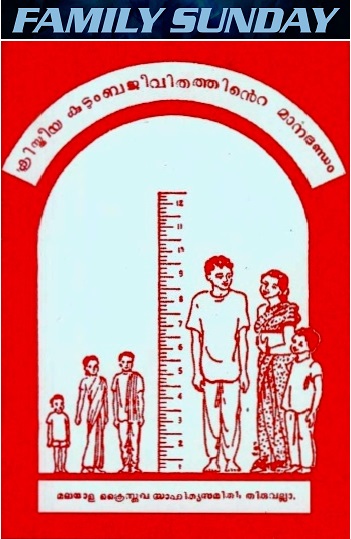
On 22nd October 2023 (21st Sunday after Pentecost), Family Sunday is celebrated by the CSI church, CNI church and the Mar Thoma Syrian Church. This year’s motto is “Family an expression of the Kingdom of God”.
Download this free pdf Ebook published in Malayalam in 1951 that is still relevant to today’s Christian life. This book can be used as a resource for your Family Sunday service. The link can be shared and used by church members, parishes and church organizations. It can be accessed on any smartphone, tablet or computer for free.
The Principles of Christian Family Life (Malayalam) (Published in 1951)


Mar Thoma Voluntary Evangelists’ Association Day – 1st October

The Mar Thoma Voluntary Evangelists’ Association, established in 1924, is a recognized organization within the Mar Thoma Church. The reformation within the church ignited a strong desire among people for group prayer and Bible study. Rev. C.P. Abraham Kassissa initiated the inaugural prayer meeting at Chayal Mar Thoma Church, Ayroor, which later evolved into monthly gatherings.
The first anniversary meeting, presided over by Most Rev. Dr. Abraham Mar Thoma, took place at Sehion Mar Thoma Church in Ayroor. Subsequently, on August 23, 1924, as decided during the first anniversary meeting, a special assembly was convened at Chayal Palli. During this gathering, an association was formally established under the name “Malankara Mar Thoma Somedha Suvishesha Sanghom” which was later changed to its current form in English as the “Mar Thoma Voluntary Evangelists’ Association”.
. The following individuals were elected as office bearers:
- President: Very Rev. C.P. Philipose Kasseessa
- General Secretary: Sadhu Kochukunju Upadeshi, Muthampakkal, Edayarnmula
- Travelling Secretary: Kolakottu C.J. John Upadeshi
This association began as a fellowship of dedicated believers who volunteered their efforts in God’s vineyard without seeking financial gain or personal motives.
The association’s activities are guided by a Seven Point Program:
- Intercession
- Bible Study
- Sharing of Experiences
- House Visits
- Ministry to the Sick and Needy
- Conducting Prayer Meetings
- Spreading the Gospel among People of Other Faiths and Ideologies
Notable activities include:
- Edavaka Mission
- Gospel Team
- Abraham Mar Thoma Memorial Bible Institute
- Abraham Mar Thoma Memorial Convention
- Abraham Mar Thoma Memorial Lectures
- Monthly Intercession Prayers, including All-Night Prayer
- Suvishesha Nilayam and Mission Fields
The camp center for these activities is the JMT Camp, which also serves as a research and meditation center located in Kombadi, Tiruvalla.
The Association manages three mission fields at Achencovil near Punalur, Mukkada near Ranny and Kalkulam near Chungathara. Its official magazine is the Tri-Monthly ‘Sandesam’ containing sermon notes, Bible studies, articles and the news about the association.

The Mar Thoma Voluntary Evangelists’ Association serves as the organization in the Church emphasizing the ministry of the laity in the Church. The Platinum Jubilee of the Association was celebrated in 1999.
C. P. Abraham Kasseessa, Cherukara Chuzhukunnil, Ayroor 1876-1940
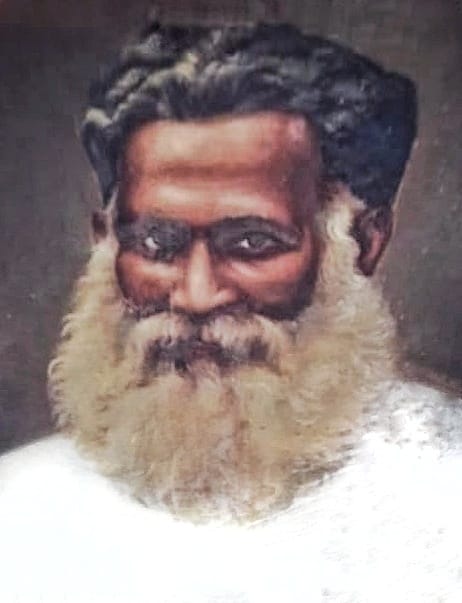
C. P. Abraham Kasseessa, hailing from Cherukara Chuzhukunnil, Ayroor (1876-1940), was the son of the Vicar General, Very Rev. Philipose Malapan (1836-1894), of Cherukara in Ayroor. Abraham’s ecclesiastical journey began after completing his Matriculation when he became a Deacon in 1897 and subsequently a Priest in 1898. His visionary zeal led to the establishment of numerous Mar Thoma Parishes in and around Ayroor, and it was his unwavering commitment that ultimately gave rise to the Evangelists’ Association.
During the Revival Movement (Naveekaranam), prayer groups emerged in various Mar Thoma Parishes. These groups dedicated themselves to Bible Study, Intercessory Prayer, and spreading the Gospel message. Under the guidance of Rev. C.P. Abraham Kasseessa, prayer groups from Kuriannoor, Ayroor, Maramon, and Kozhencherry convened at Chayal Mar Thoma Church, Ayroor. The inaugural meeting occurred on August 23, 1923, followed by monthly gatherings led by Abraham Kasseessa.
The first anniversary meeting, presided over by Abraham Mar Thoma Thirumeni, took place at Sehion Mar Thoma Church in Ayroor. Subsequently, on August 23, 1924, as decided during the first anniversary meeting, a special assembly was convened at Chayal Palli. During this gathering, an association was formally established under the name “Malankara Mar Thoma Somedha Suvishesha Sanghom” which was later changed to its current form. The following individuals were elected as office bearers:
- President: Very Rev. C.P. Philipose Kasseessa
- General Secretary: Sadhu Kochukunju Upadeshi, Muthampakkal, Edayarnmula
- Travelling Secretary: Kolakottu C.J. John Upadeshi
Ayroor Achen, Rev. C. P. Philipose
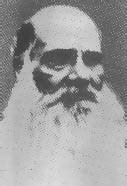
Ayroor Achen, Rev. C. P. Philipose (born. May 25, 1868, died. February 2, 1948), son of Ayroor Cherukara Naranathu Paruvelithundiyil Very Rev. Philipose Malpan and Mariamma Philipose (Chengannur Kanjipuzhethu).
After completing his Bachelor of Arts (B.A.), he was ordained as a deacon in 1892 and later as a priest in 1895. Rev. C. P. Philipose served as the vicar for various parishes in the vicinity of Kozhencherry and Ayroor. Many of the Mar Thoma parishes to the east of Kozhencherry owe their establishment to his dedicated efforts.
In 1890, Rev. C. P. Philipose assumed the role of General Secretary of the Mar Thoma Evangelistic Association, a position he held for over half a century until his resignation due to declining health. He provided steadfast leadership for the Maramon Convention for nearly five decades and was a significant contributor as one of the main translators. His sons, Mr. C. P. Philip and Prof. C.P. Mathew, continued his legacy. Rev. C. P. Philipose passed away on February 2, 1948, and he was laid to rest in the cemetery of Kozhencherry Mar Thoma Church, in the front row.
Kolakottu Kochukunju Upadeshi, C. J. John Upadeshi
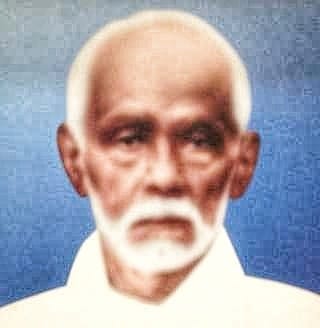
Kolakottu Kochukunju Upadeshi, also known as C. J. John Upadeshi (1879 – July 19, 1975), held the distinction of being the first Travelling Secretary of the Mar Thoma Evangelists’ Association. Born into the renowned Kolakottu Family of Ayroor, he received his early education in Ayroor itself. From a very young age, he nurtured a profound aspiration to engage in Gospel work. Despite being born with a physical impairment that caused a noticeable limp, he persevered in his calling, and God empowered him to provide significant contributions to the Voluntary Evangelists’ Association during its formative years.
At the inaugural meeting of the Voluntary Evangelists’ Association, held at Chayal Mar Thoma Church in Ayroor on August 23, 1924, he assumed the role of Travelling Secretary. His dedicated service spanned nearly four decades, during which he toured numerous Mar Thoma Parishes and established Association branches. He played an instrumental role in founding Edavaka Missions and facilitated the setup of administrative centers for the Association. His approach emphasized strengthening local branches rather than hosting grand conventions.For a period, he resided at the AMM Bible Institute in Kompadi, Tiruvalla, where he conducted Bible classes for students. He remained faithful to his mission until his heavenly calling.As the scriptures proclaim, “Those who are wise will shine like the brightness of the heavens, and those who lead many to righteousness, like the stars forever and ever.”
Sadhu Kochukunju Upadesi
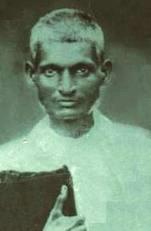
Sadhu Kochukunju Upadesi (born Dec 1883, died 30th Nov, 1945) also known as Mr. Moothampakkal Itty Varghese from Moothampakkal, Edayaranmula near Chengannur, held a remarkable place in the history of the Mar Thoma Syrian Church. He served as the inaugural General Secretary of the ‘Mar Thoma Voluntary Evangelists’ Association, established in 1924, and remained in this role until 1945. Over the span of nearly four decades, he fervently preached the teachings of the Bible in clear and accessible language throughout South India.
Sadhu Kochukunju Upadesi embodied the life of a true Sadhu, committing himself to a spiritual existence. He composed an impressive repertoire of more than 200 hymns, many of which continue to feature prominently in worship books across various denominations to this day. His powerful messages led thousands of individuals to turn to God in faith.
Read more about his life in our free pdf Ebook: https://nalloorlibrary.files.wordpress.com/2013/06/sadhu-kuchujunu-upadeshi.pdf
His Grace the Most Rev. Dr. Abraham Mar Thoma Metropolitan

Dr. Abraham Mar Thoma Metropolitan held the position of President in both the Mar Thoma Evangelistic Association and the National Missionary Society. In 1917, he was consecrated as a Bishop and served tirelessly as the Suffragan Metropolitan, dedicating himself to the spiritual fortification of the Church and its missionary endeavors. In 1944, upon the passing of Titus II Metropolitan, he ascended to the role of Metropolitan.
The Abraham Mar Thoma Bible Institute, established to train voluntary evangelists within the Church, bears his name in recognition of his contributions. His visionary outlook led to the creation of the Mar Thoma Suvishesha Sevika Sanghom in 1919 (Sevika Sanghom was inaugurated on Friday, February 14, 1919, during the Maramon Convention), as well as the Voluntary Evangelists Association in 1924.
He also played a pivotal role in the establishment of the Vanitha Mandiram in Tiruvalla, an educational institute for the Sevika Sanghom. Although his tenure as Metropolitan spanned only four years, his extensive ministry as a Bishop significantly fortified the Church in all its missionary endeavors. He departed to his eternal home in 1947.
Read more about his life in our free pdf Ebook: https://nalloorlibrary.files.wordpress.com/2013/06/ebook-dr-abraham-mar-thoma.pdf

Church South India – Celebrating 76 years of God’s Faithfulness (1947-2023) (Order of Worship, Video & Rare Photos)


“Dearly beloved brethren, in obedience to the Lord Jesus Christ, the Head of the Church, who, on the night of His Passion prayed that His disciples might be one;
“and by the authority of the governing bodies of the uniting churches whose resolutions have been read in your hearing and laid in prayer before Almighty God;
“I do hereby declare that these three churches are be come one Church of South India and that those Bishops, Presbyters, Deacons and probationers who have assented to the Basis of Union and accepted the Constitution of the Church of South India, and whose names are laid upon this Holy Table, are Bishops, Presbyters and Deacons of this Church.”
Repository Name: Burke Library at Union Theological Seminary, Columbia University
27 September, 1947: Formation of Church of South India (CSI), as a union of Anglican, Presbyterian, Congregationalist and Methodist churches. The idea of a Church union was proposed in 1919 at a conference held in Tranquebar (now Tarangambadi) in 1919. After 28 years of discussions various denominational churches in South India established by different Missionary societies agreed to the formation of the Church of South India in 1947 after India attained independence. The inaugural ceremony was held at St. George Cathedral Madras (Chennai).
Today the Church of South India is one of the largest Protestant churches in India and is a member of the Anglican Communion and its bishops participate in the Lambeth Conferences. It is also a member of the World Council of Churches, the World Alliance of Reformed Churches, and the National Council of Churches in India.
The Church of South India (CSI), Church of North India (CNI), and Malankara Mar Thoma Syrian Church of India jointly formed the Communion of Churches in India (CCI) in 1978 for mutual recognition of the ministry and leaders, inter communal relationship, and to explore possibilities of working together and other areas of cooperation in the fulfillment of the mission of the Church in India.
The presiding bishop of the inaugural function was the Rt. Rev. C. K. Jacob of the Anglican Diocese of Travancore and Cochin. A vast congregation gathered in the cathedral at Madras from all over the world. The following historical declaration was made by Bishop Jacob at the inaugural service.
“Dearly beloved brethren, in obedience to the Lord Jesus Christ the head of the church, who on the night of his passion prayed that his disciples might be one, and by authority of the governing bodies of the uniting churches whose resolutions have been read in your hearing and laid in your prayer before Almighty God; I do hereby declare that these three churches, namely – the Madras, Madura, Malabar, Jaffna, Kannada, Telugu, Travancore Church councils of the South India United Church; the Methodist Church of South India, Trichinopoly, Hyderabad and Mysore districts; the Madras, Travancore and Cochin, Tinnevelly and Dornakal dioceses of the Churches of India, Burma and Ceylon; are become one Church of South India, and these bishops, presbyters, deacons and probationers who have assented to the basis of union and accepted the constitution of the Church of South India, whose names are laid upon this holy table, are bishops, presbyters and deacons of this church. In the name of the Father, and the Son, and the Holy Spirit, Amen.” ~ wikipedia



